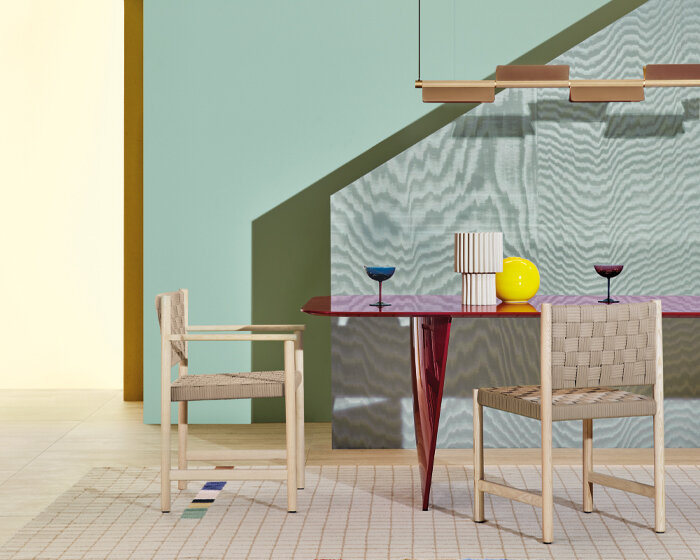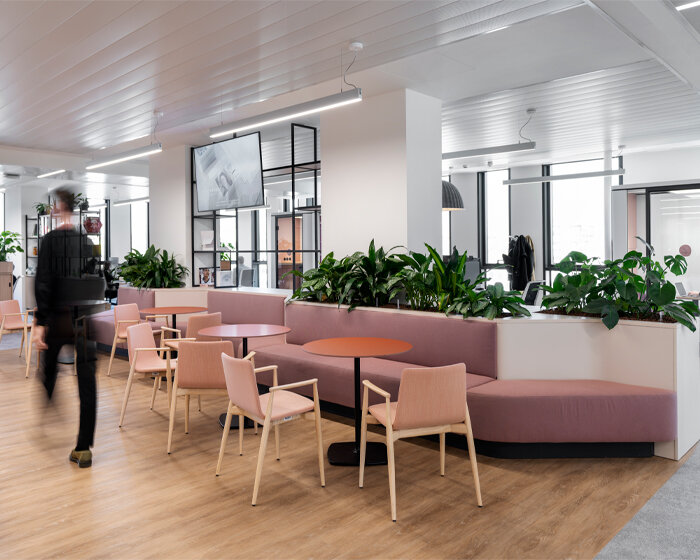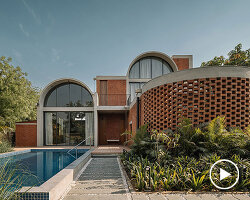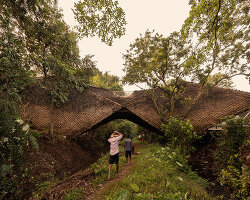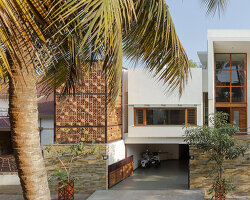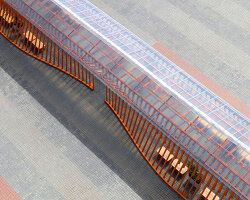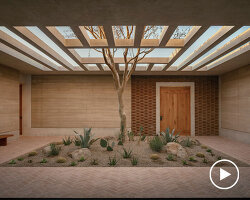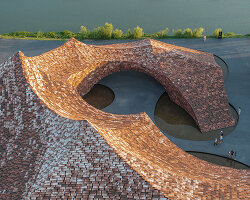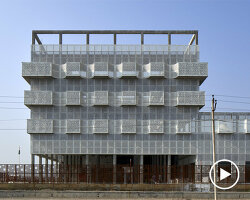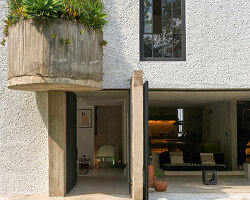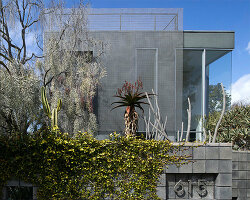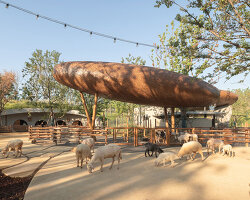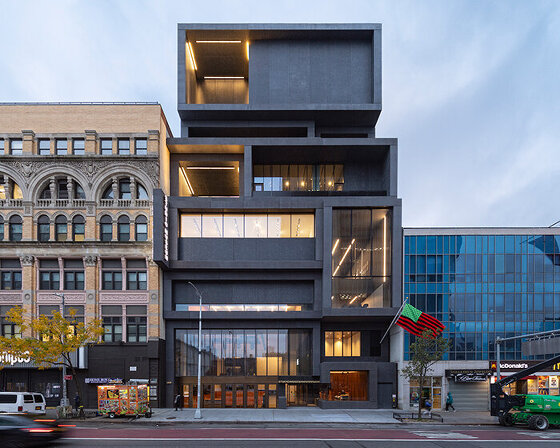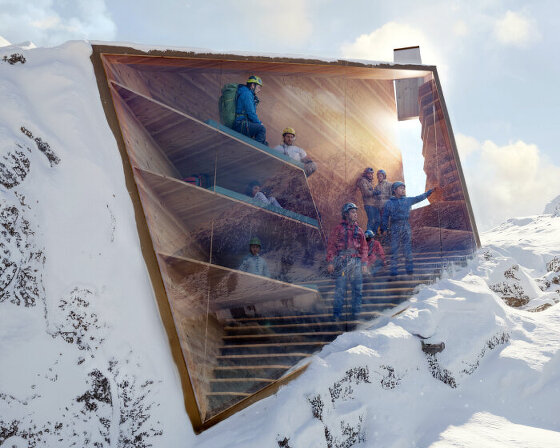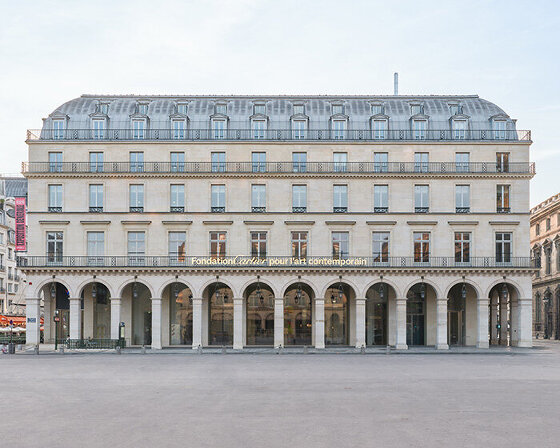subterranean Ruins by a threshold
Just outside the Indian village of Kaggalipura, some 40 km south of Bangalore in Karnataka, a series of brick walls peeps through the dense tropical vegetation of mango, banana, coconut, and sugar cane. Although resembling ancient ruins, the structures – aptly named Subterranean Ruins – are part of an unusual architectural project by local practice, A Threshold. Not far from Bannerghatta National Park, an ideal destination for birdwatchers, the village of Kaggalipura, named after the Kaggali tree (Acacia catechu), a constant feature of the rural landscape of this important agricultural area is home to a few thousand inhabitants, many of whom – laborers, artists, and craftsmen – were directly involved in the building process. Explore the hidden corners of this nature-filled architecture as captured by London-based photographer Edmund Sumner.
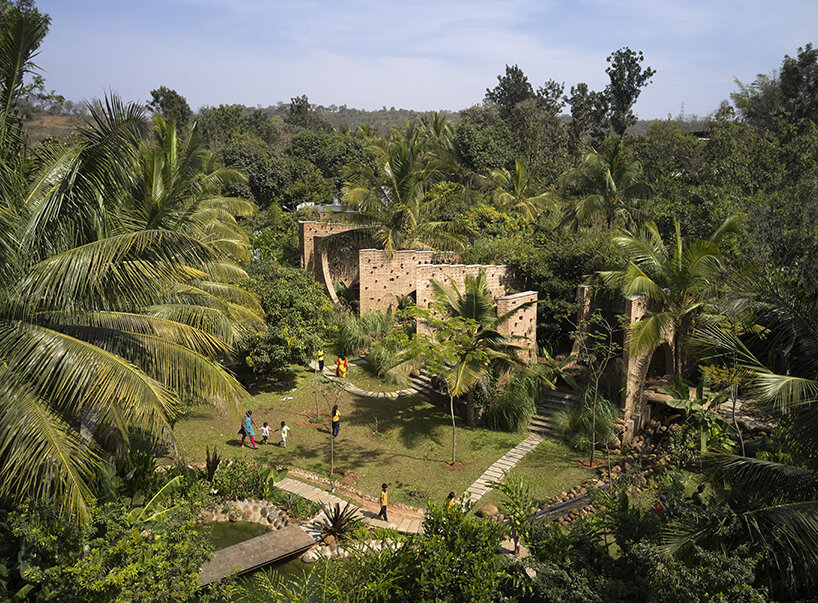
all images & full header video © Edmund Sumner
a public center freely accessible to kaggalipura villagers
A Threshold’s clients were a couple of philanthropists who, alongside the private section, wanted a multifunctional public center freely accessible to the villagers. The brief demanded that the complex should not be limited to a specific functional program but rather should be able to host school classes, children’s workshops, seminars, exhibitions, concerts, and other events, but also double up as guest quarters for the owners’ visiting friends. Volumetrically, the project design took its cue from the natural elements on the site to seamlessly integrate the new, single-level building into the landscape.
Responding to those conditions, lead architects Avinash Ankalge and Harshith Nayak did not sacrifice any of the existing trees, exploiting instead the steeply sloping site to create underground spaces. ‘As a result, the complex is not immediately apparent to the visitor, whose gaze is first drawn to the planted roofs and only subsequently to the main entrance along the basement front. Perfectly camouflaged in the natural landscape, the complex seems almost uninhabited. The structure resembles the remains of some ancient abandoned site. The large arches of different shapes and sizes have been given a rough look, making them seem the walls of buildings going back to some ancient past,’ the studio shares.

multifunctional public center freely accessible to the villagers
an interplay of solids and voids
Subterranean Ruins is made up of four independent areas, which are connected by outdoor spaces in an interplay of solids and voids that lend balance and harmony to the whole. The courtyard is a key functional element. An outdoor play area for local children, it can also be used by local artists as an open-air exhibition space. The rooms are placed side by side lengthwise, like a gently curving sequence of row houses. Their north-south orientation means they benefit from the evening sun but also have a continuous flow of air from a second, lower-level court, bringing light and air to the rear of the building. The layout and furnishings of the rooms have been designed to allow the environments to serve as bedrooms or living areas, exhibition rooms, or classrooms. The custom-designed interiors are mostly the work of A Threshold; any other fixtures and fittings were chosen by the firm. In addition, all spatial reconfiguration requirements are curated by the architects.
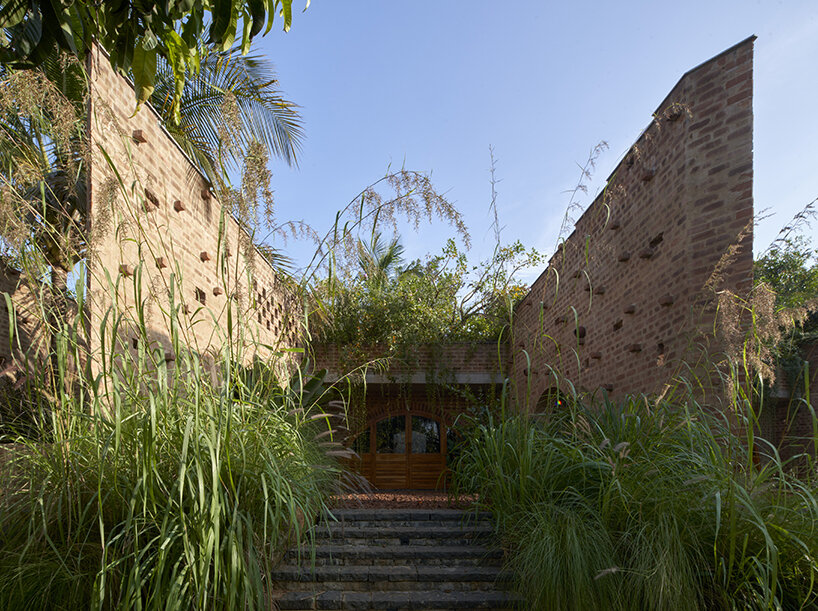
a series of brick walls peeps through the dense tropical vegetation
Subterranean Ruins blends brick, stone, concrete, and mortar
The project team used local materials sourced within a 50-km radius of the site for both exteriors and interiors. These include exposed red brick walls and natural stone flooring –rough-finished for the exteriors and smoothed for the interiors. The cobblestones of the courtyard come from a nearby black-granite quarry. Both the materials and the construction techniques reflect the project’s underlying environmental commitment. Boulders excavated on site were used for the retaining walls; concrete was used only for the floor slabs, and the mortar for joints contains only 5% cement. Energy consumption is also environmentally compliant, the underground sections and ample shading afforded by the trees doing away with the need for air conditioning, while the sloping site is exploited to create a stormwater collection system supplying irrigation to the local fruit orchards.
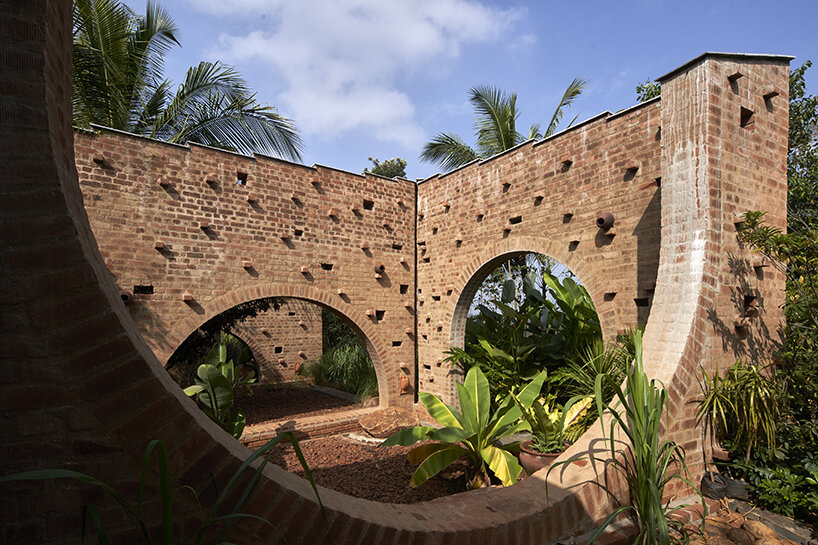
A Threshold completed the project with laborers, artists, and craftsmen

a play of solid and void
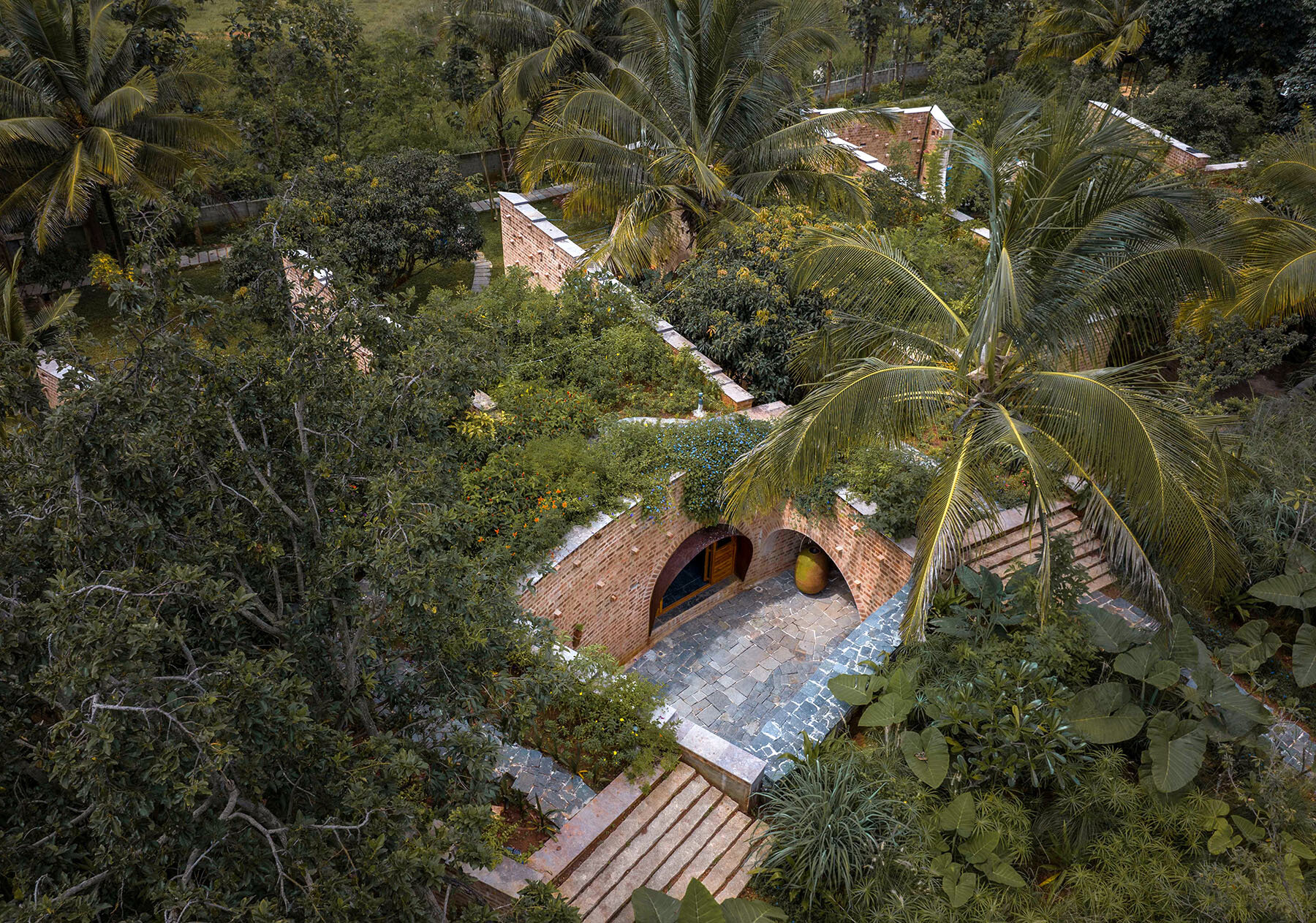
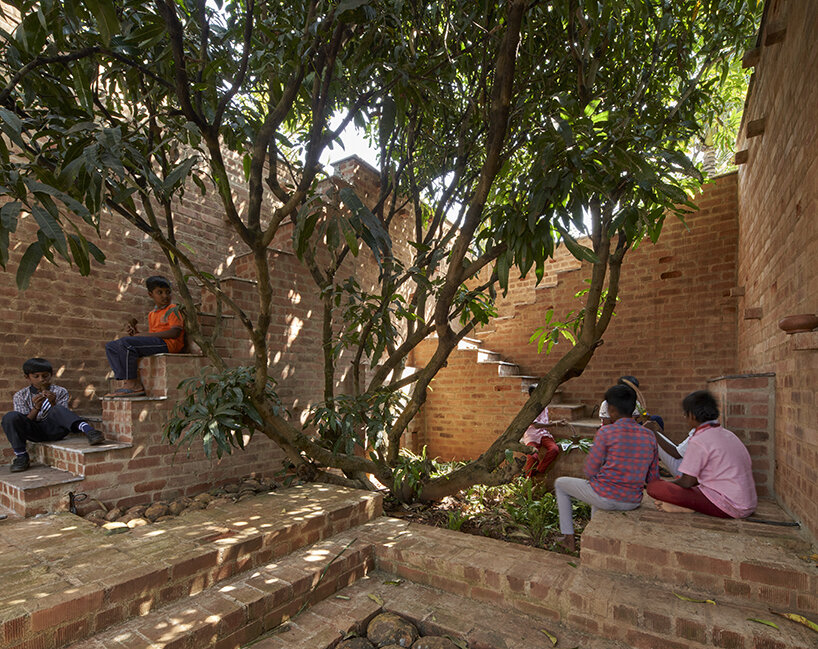
the space can host school classes, children’s workshops, seminars, exhibitions and concerts

combining exposed red brick walls and natural stone flooring
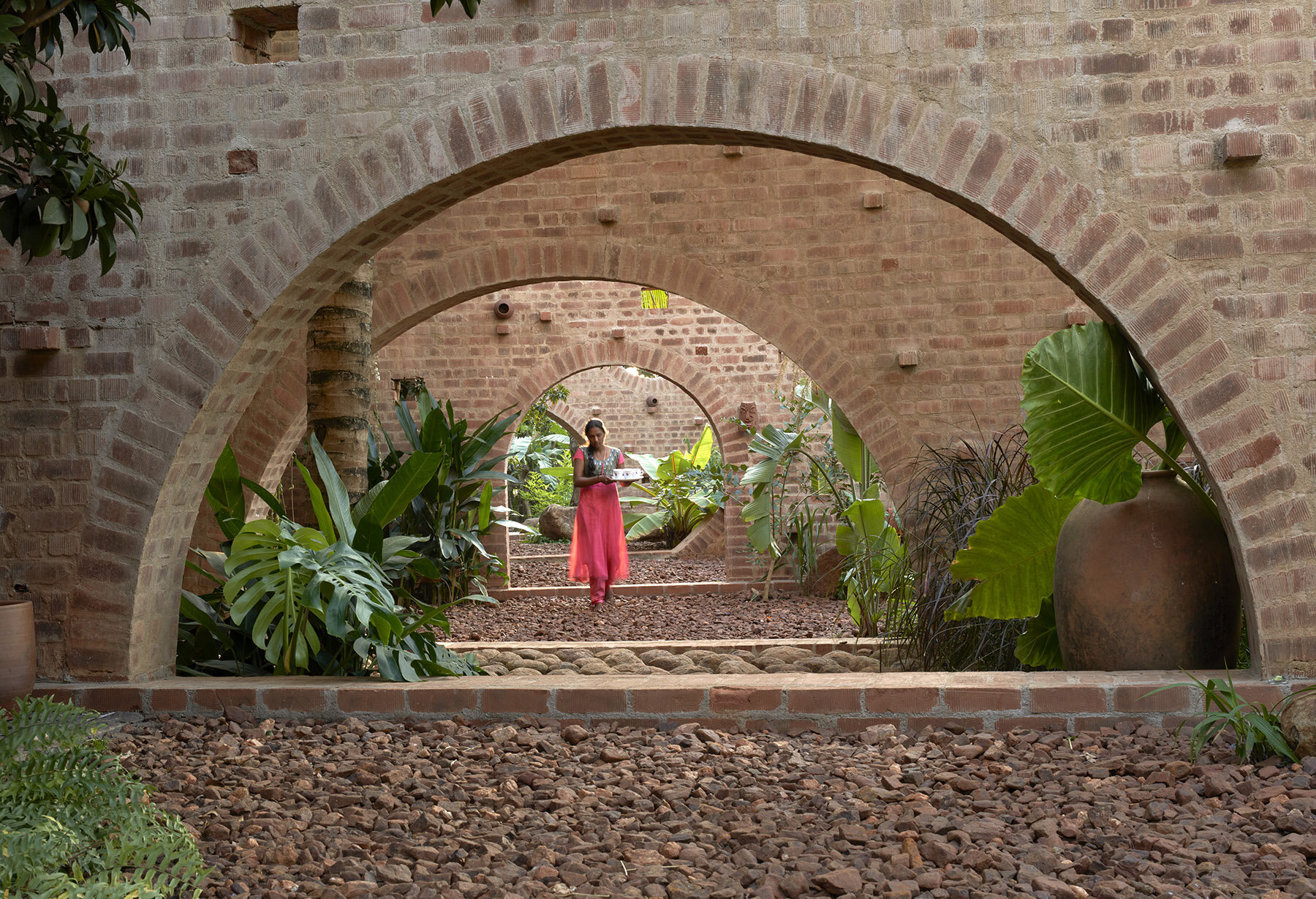
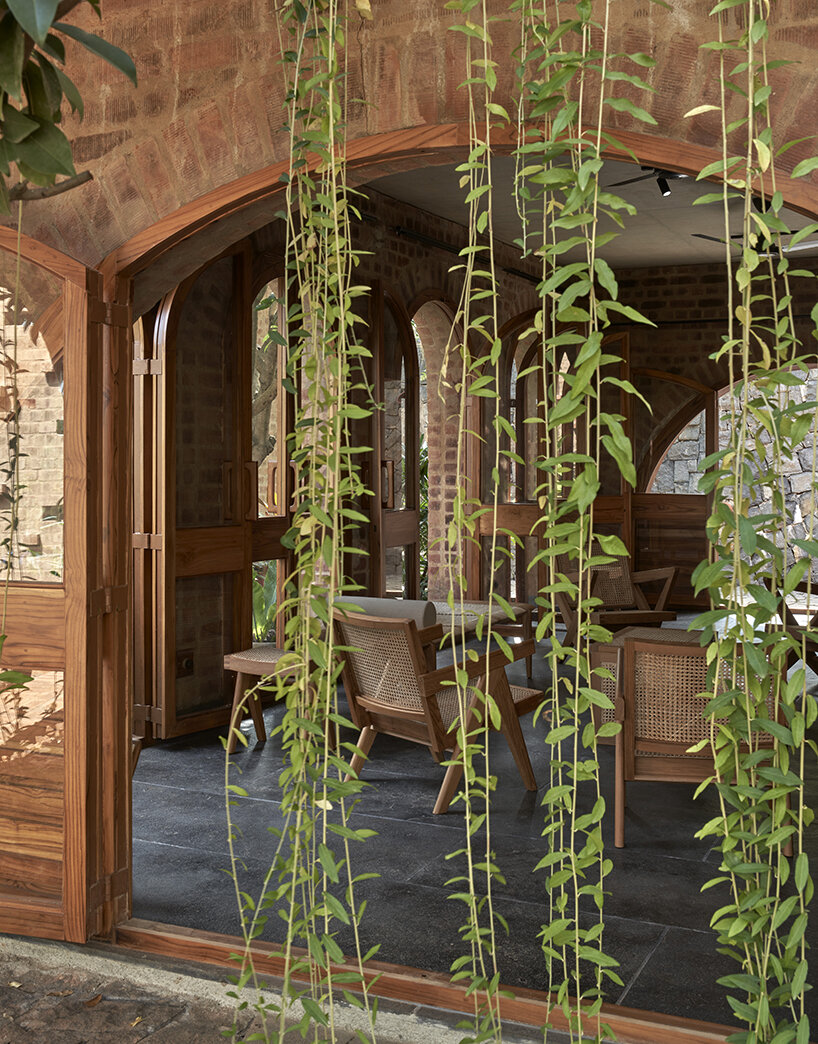
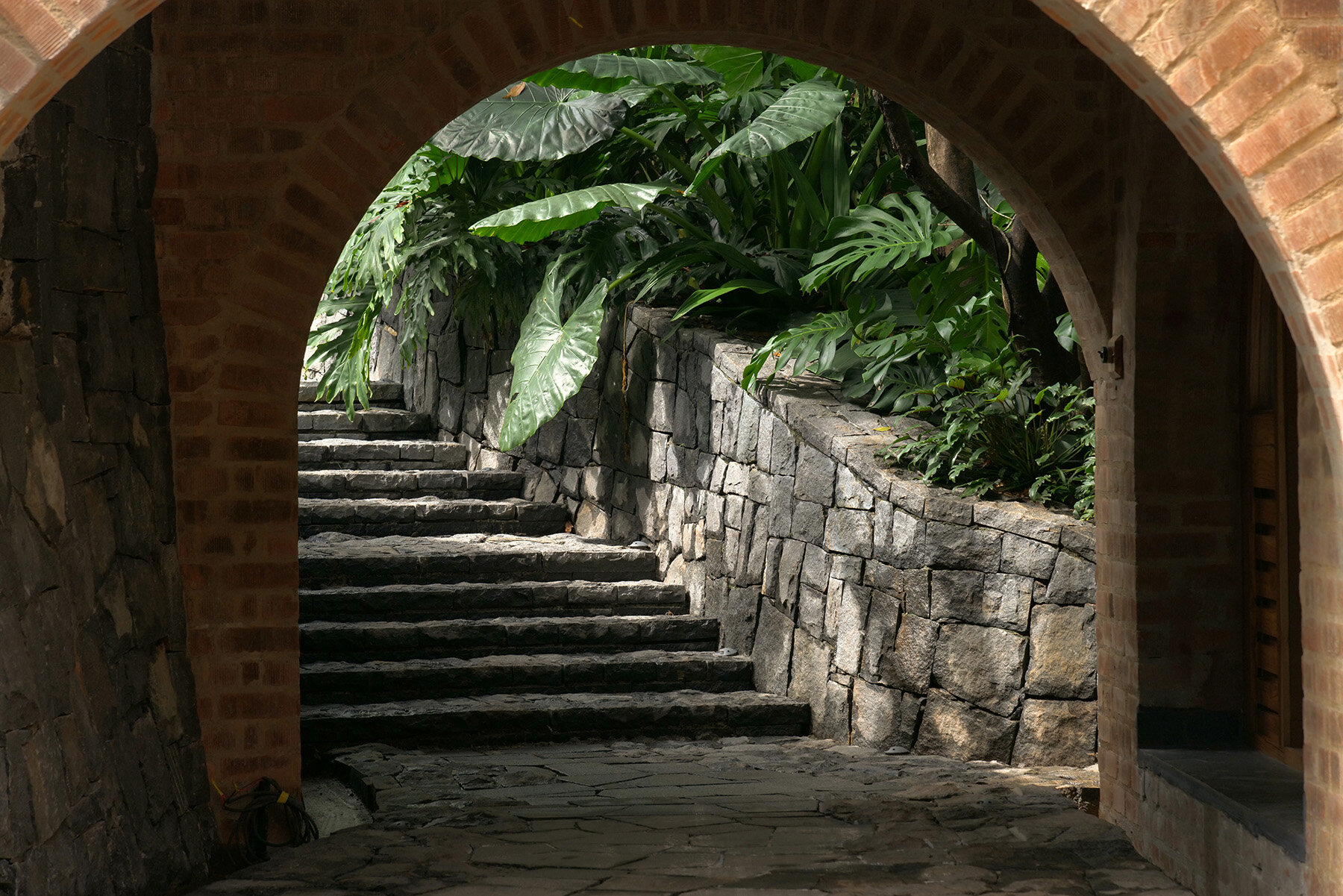
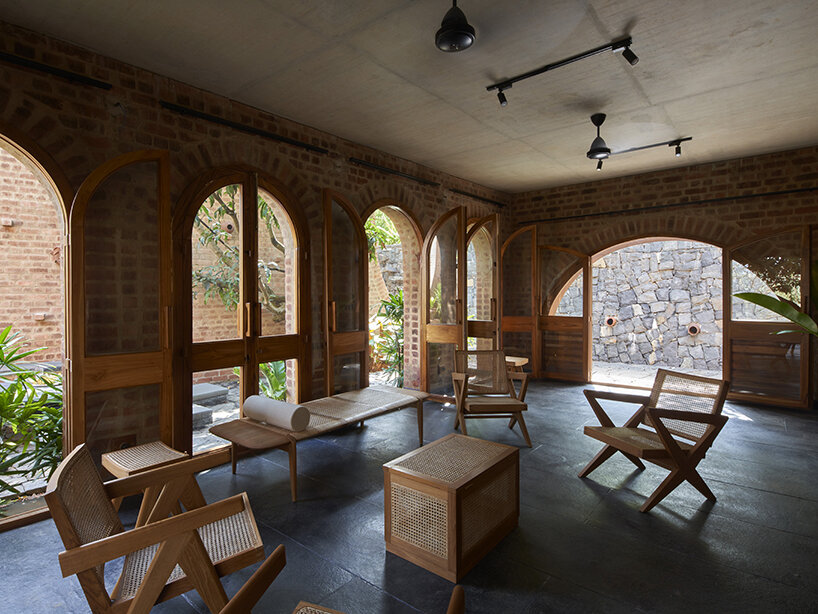
the interiors can be used as bedrooms or living areas, exhibition rooms, or classrooms
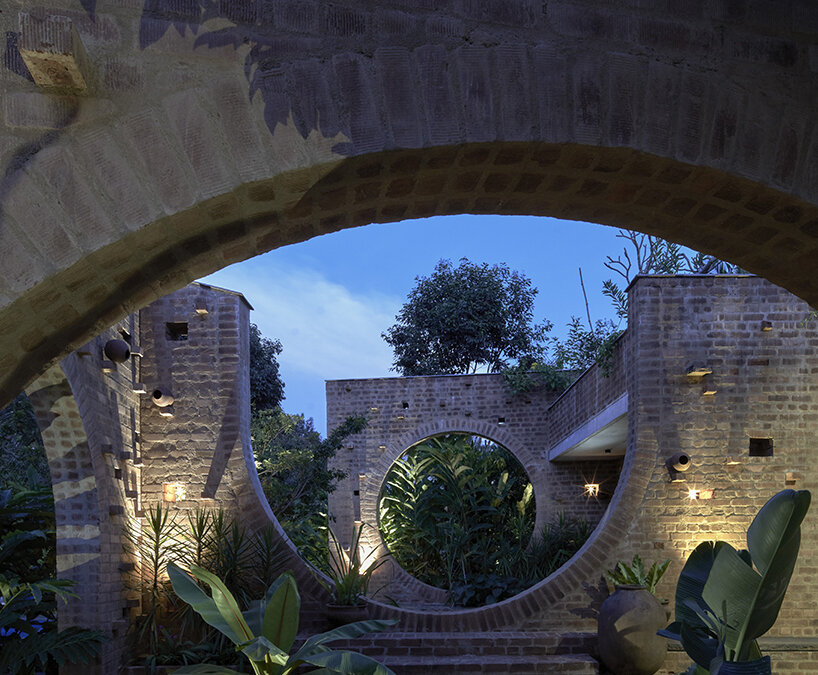
night time view
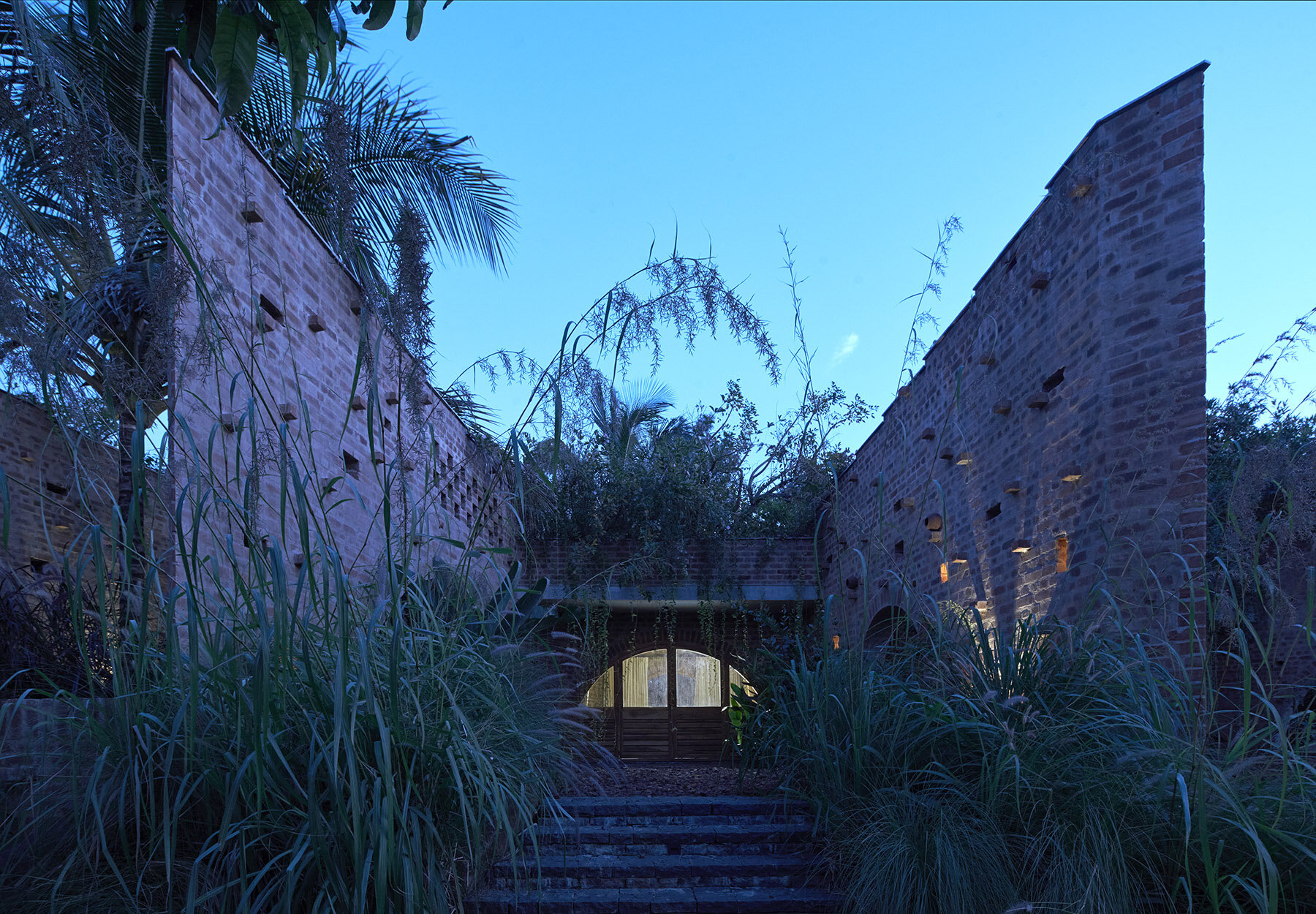













project info:
name: Subterranean Ruins
location: Kaggalipura, Bangalore, Karnataka, India
client:V.S.Bhaskar, V. Kiran Mai
architecture studio: A Threshold | @a_threshold
design team: Avinash Ankalge, Harshith Nayak
photographer & videographer: Edmund Sumner | @edmundsumner
structural consultants: Raghvendra- Skanda structural consultants
civil contractor: Mohan & team
stone work: Hindustan Stone work- Abdul
landscape: Divakar & A Threshold
plumbing consultant: Pamod Kumar
electrical consultant: Raghupati Reddy, Abhishek j.
pottery: Ravi
completion year: December 2022
site area: 8000 sqm
gross built area: 165 sqm
